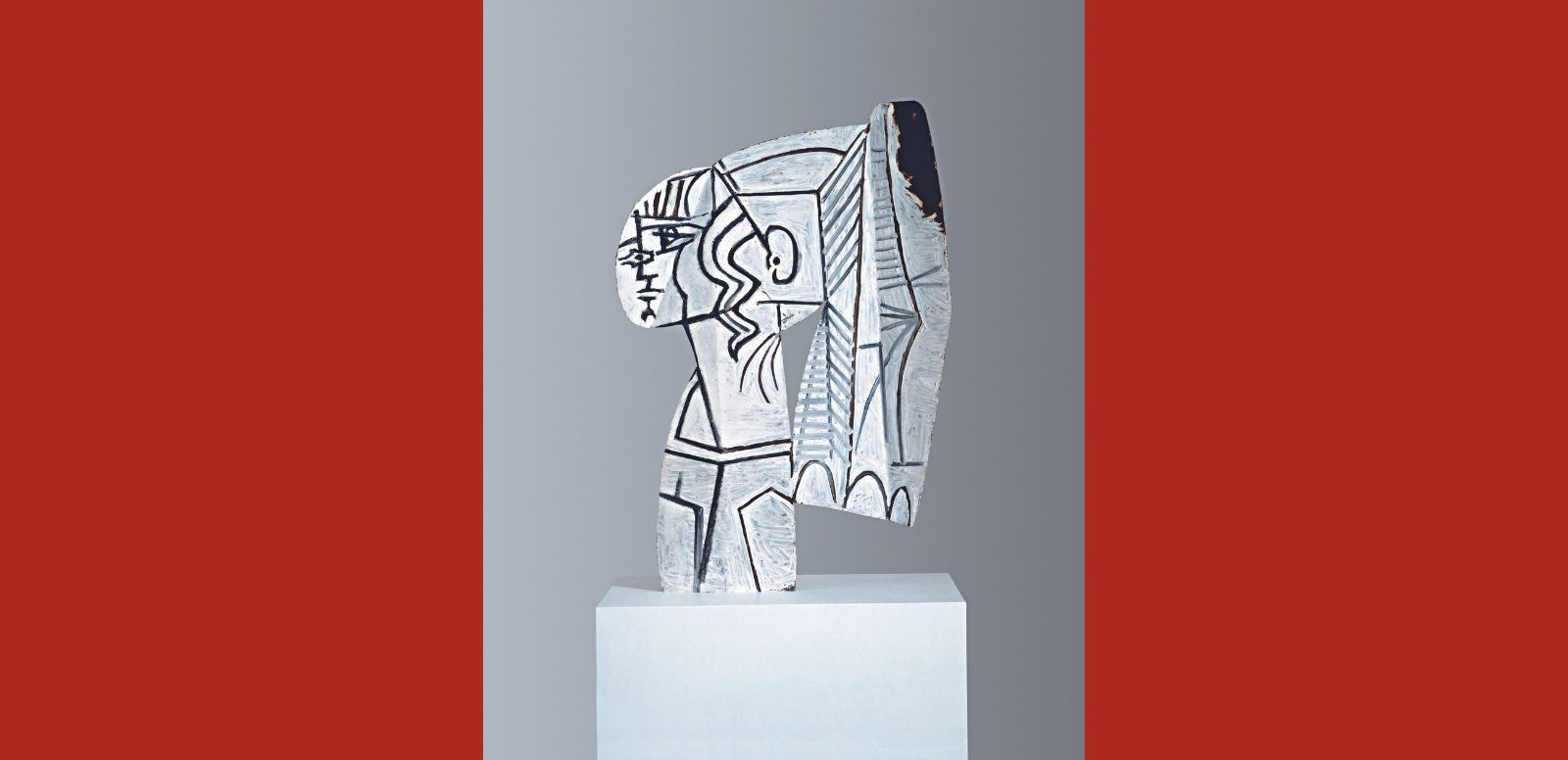
Chapa recortada, doblada y pintada por ambas caras
Fondation Hubert Looser, Zurich
© Fondation Hubert Looser, Zurich
© Sucesión Pablo Picasso, VEGAP, Madrid, 2023
Monday to Sunday from 10 a.m. to 7 p.m.
The Museo Picasso Málaga presented today at a press conference the exhibition Picasso sculptor. Matter and body, which will be open from 8 May to 10 September.
The exhibition will be inaugurated this afternoon, in a ceremony that will begin at 18. 30h and will be attended by the Minister of Culture and Sport, Miquel Iceta; the mayor of Malaga, Francisco de la Torre Prados; the Andalusian Minister of Tourism, Sport and Culture, Arturo Bernal; the president of the Diputación de Málaga, José Francisco Salado; the commissioner for the Commemoration of the 50th Anniversary of the death of Pablo Picasso, Carlos Alberdi; and Bernard Ruiz Picasso, grandson of the artist and co-president of FABA.
Also in attendance will be the president of AC/E, José Andrés Torres Mora; the territorial delegate of Telefónica, Joaquín Segovia; the director general of the Fundación Unicaja bank, Sergio Corral, who will accompany the director of the Museo Picasso Málaga, José Lebrero Stals, and the curator of the exhibition, Carmen Giménez, on a tour of the exhibition.
This exhibition, which has been organised in conjunction with the Guggenheim Museum Bilbao to which it will travel in September, focuses on the human figure and the potential of different materials in Pablo Picasso's sculpture.
This is the first exhibition in the Picasso Celebration programme in Spain to address Picasso's sculpture by presenting a wide selection of materials and styles, such as wood, iron, plaster, cement, metal and bronze, reflecting the plurality of approaches the Malaga-born artist used to represent the human body.
Picasso conceived sculpture as a form of expression comparable to painting, drawing, engraving or ceramics, and he worked on this artistic discipline throughout his life, considering it to be equally important as the others.
Although sculpture is a lesser-known artistic facet of Picasso, this exhibition reveals its importance in the construction of his pictorial oeuvre, as well as the influence of painting on his sculptural production. Picasso constantly reinvented himself, giving new energy to each medium he used and creating connections between all his creations. Through photographs of his studios and homes, it can be seen how Picasso considered his sculptures to be members of his household and kept them in his private collection until his last days.

